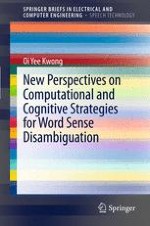2013 | OriginalPaper | Buchkapitel
2. Methods for Automatic WSD
verfasst von : Oi Yee Kwong
Erschienen in: New Perspectives on Computational and Cognitive Strategies for Word Sense Disambiguation
Verlag: Springer New York
Aktivieren Sie unsere intelligente Suche, um passende Fachinhalte oder Patente zu finden.
Wählen Sie Textabschnitte aus um mit Künstlicher Intelligenz passenden Patente zu finden. powered by
Markieren Sie Textabschnitte, um KI-gestützt weitere passende Inhalte zu finden. powered by
